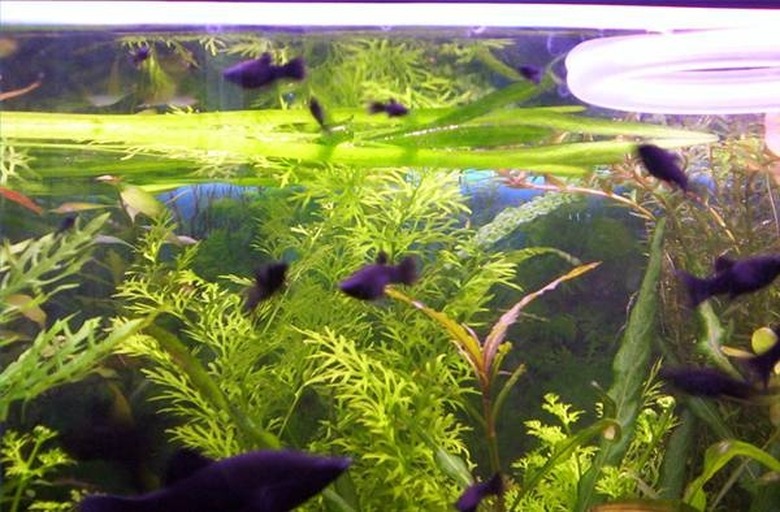How Black Mollies Mate
The Basic Mating Behavior of Black Mollies
The Basic Mating Behavior of Black Mollies
Black mollies are part of a class of fish known as "live bearers." The females of the fish that fall into this class keep their fertilized eggs inside their bodies until they hatch, at which time they are released as fry. When black mollies mate, the male will transfer milt, the fluid that contains his sperm, into the female's body using is gonopodium. The gonopodium is a special anal fin that is shaped like a rod rather than a normal fin.
Distinguishing Between Male and Female Mollies
Distinguishing Between Male and Female Mollies
Distinguishing between male and female black mollies is fairly simple. The males will have the gonopodium instead of a normal anal fin. Females tend to look larger and rounder than males. Some males will have elongated dorsal fins, but this is not seen on the females.
Mating and Egg Development
Mating and Egg Development
Black mollies do not pair off when they mate. The males will fertilize any females they come in contact with, and they will even try to fertilize females that have already been fertilized. Once the female is fertilized, she will keep the eggs inside her body for 60 to 70 days until they hatch. When they hatch, she will give birth to the live fry, typically 10 to 60 at a time. The babies will be around a half of an inch in length. She can give birth to more fry later from the same mating, because she can retain the male's sperm inside her body for many months. Some aquarium owners have reported new fry from mating encounters that occurred six months earlier. Many females will deliver some undeveloped eggs with their live babies when they give birth. This is not a cause for concern, and when the fish mate in captivity, these undeveloped eggs can simply be discarded.
Breeding Black Mollies in Captivity
Breeding Black Mollies in Captivity
Aquarium owners who wish to breed mollies will find it very easy. Mollies will breed in just about any conditions. However, the fry need a healthy environment to grow and thrive. Mollies thrive in slightly brackish water, and a breeding tank should contain plenty of plants, because the parent fish will eat the fry. The babies need plenty of hiding places if they are going to be raised in the same tank as their parents. Gravid, or pregnant, females can be placed in special breeding traps that allow the babies to drop to safety below the parent fish. The females can then be removed after they have delivered all of their babies. This setup allows for the largest number of fry to survive.
